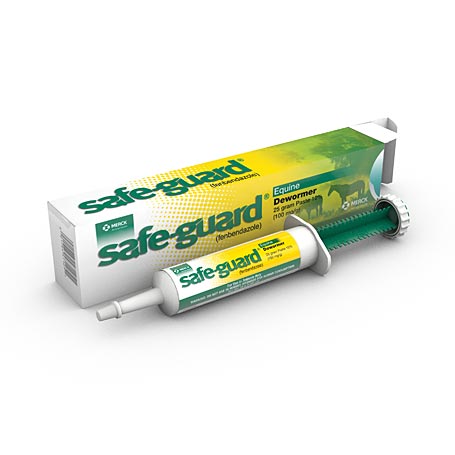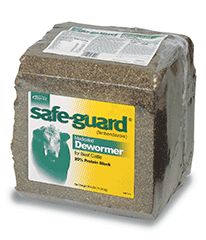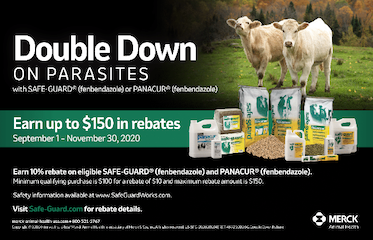
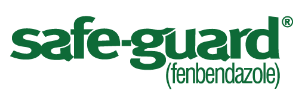
Don’t let profit-eating parasites prey on your ROI.2
Used in combination with ivermectin (or any other kind of -ectin), Safe-Guard dewormer can help you kill more of those microscopic monsters than you can with ivermectin alone.1 That’s a whole lot of worms not eating away at your herd’s potential, or your profits.2
This is Cooperia – one of the most prevalent internal parasites in U.S. cattle herds. Infected calves experience 7.4% lower average daily gain.3
Double down on resistance.
Today’s parasite researchers recommend using two classes of dewormers for effectiveness and to help curb resistance issues. Widespread use of an endectocide (like ivermectin) to control both internal and external parasites should be accompanied by a benzimidazole (like Safe-Guard) to get the tough internal parasites and fight against resistance.
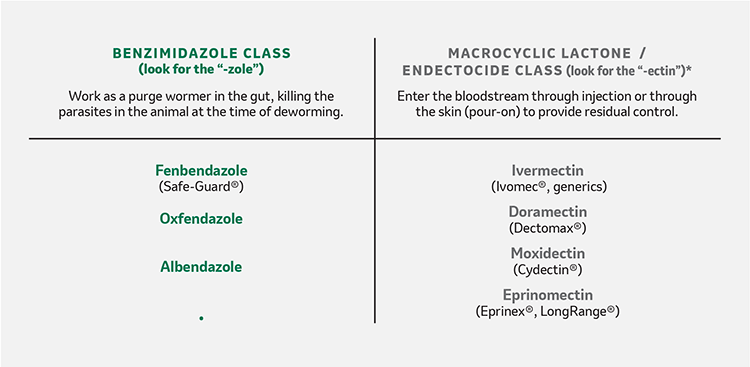
*Macrocyclic lactones can also be broken down into avermectins and milbermycins, but are still the same class.
Why two (classes of) dewormers are better than one.
Widespread use of endectocides in cattle over the last 40 years has contributed to a growing resistance concern. This is primarily because resistance to one compound or brand may cause resistance to other members of the same class. This is known as side resistance. Fortunately, side resistance can be overcome when Safe-Guard is used in combination with an avermectin.
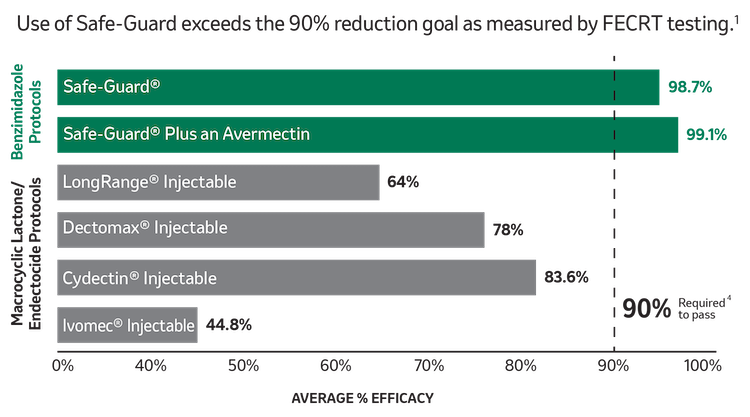
Add Safe-Guard. Subtract parasites. Add pounds.
Safe-Guard features broad-spectrum activity against internal parasites, which threaten herd health, feed intake and performance.
- Research shows calves infected with macrocyclic lactone-resistant Cooperia had 7.4% less average daily gain and 5.4% lower feed intake3
- Safe-Guard is 98.7% effective at eliminating these resistant parasites5
- Safe-Guard quickly stops egg shedding and pasture contamination
- Safe-Guard increased calf weaning weight by an average of 28.9 lbs. per head in 22 trials across 10 states5
Hear it from a parasitologist.
Dr. Louis Gasbarre has witnessed firsthand the growing problem that is parasite resistance. In this video, he explains and stresses the importance of using two classes of dewormers concurrently.
Available in a variety of formulations for flexible administration.
The Safe-Guard guarantee.
One way you can check that your parasite management program is working is through a fecal egg count reduction test (FECRT). A FECRT will not only tell you which parasites you’re dealing with, but also if they’re responding to your program. With Safe-Guard, you can expect to see a 90% reduction in fecal egg count after just 14 days.1
1Merck Animal Health National FECRT Database
2Lawrence JD, Ibarburu MA. Economic analysis of pharmaceutical technologies in modern beef production. Proceedings of the NCCC-134 Conference on Applied Commodity Price Analysis, Forecasting, and Market Risk Management. 2007; 1-18.
3Stromberg BE., et al. Cooperia punctata: Effect on cattle productivity. Vet Parasitol. 2012;183(3-4):284-291.
4Coles, et. al. WAAVP methods for the detection of anthelmintic resistance in nematodes of veterinary importance.
5Data on file, Merck Animal Health.
IMPORTANT SAFETY INFORMATION | RESIDUE WARNINGS
SAFE-GUARD Paste and Suspension: cattle must not be slaughtered within 8 days following last treatment; Mineral and medicated feed products: 13 days; EN-PRO-AL Molasses Block: 11 days; Protein Block: 16 days; For dairy cattle, the milk discard time is zero hours. A withdrawal period has not been established for this product in pre-ruminating calves. Do not use in calves to be processed for veal. For complete information, refer to the product label.


